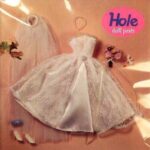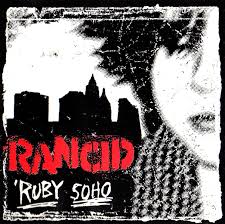 In 1994, Hole released “Doll Parts,” a song that would become a defining anthem of 90s alternative rock and a deeply personal statement from frontwoman Courtney Love. Emerging from the grunge and riot grrrl movements, the track captures a raw, unfiltered emotional intensity that resonated with listeners navigating the complexities of love, vulnerability, and self-doubt. “Doll Parts” is more than a song—it is a confessional, a delicate yet powerful exploration of insecurity, desire, and the longing for acceptance. Love’s lyrics, often fragmented and haunting, pair perfectly with the song’s juxtaposition of soft, melodic verses and explosive, distorted choruses, creating a dynamic that mirrors the emotional push and pull at the heart of the narrative. Its simplicity in composition belies its depth, with a haunting vulnerability that has cemented the song as a touchstone of 90s alternative music. Beyond its chart performance, “Doll Parts” endures because it captures the raw honesty and emotional turbulence of the era, speaking to feelings of inadequacy, yearning, and the universal desire to be loved. Courtney Love’s intimate vocal delivery, combined with Hole’s gritty instrumentation, ensures that the song remains not only a musical milestone but also a deeply human one, resonating across decades for its authenticity and unflinching emotional power.
In 1994, Hole released “Doll Parts,” a song that would become a defining anthem of 90s alternative rock and a deeply personal statement from frontwoman Courtney Love. Emerging from the grunge and riot grrrl movements, the track captures a raw, unfiltered emotional intensity that resonated with listeners navigating the complexities of love, vulnerability, and self-doubt. “Doll Parts” is more than a song—it is a confessional, a delicate yet powerful exploration of insecurity, desire, and the longing for acceptance. Love’s lyrics, often fragmented and haunting, pair perfectly with the song’s juxtaposition of soft, melodic verses and explosive, distorted choruses, creating a dynamic that mirrors the emotional push and pull at the heart of the narrative. Its simplicity in composition belies its depth, with a haunting vulnerability that has cemented the song as a touchstone of 90s alternative music. Beyond its chart performance, “Doll Parts” endures because it captures the raw honesty and emotional turbulence of the era, speaking to feelings of inadequacy, yearning, and the universal desire to be loved. Courtney Love’s intimate vocal delivery, combined with Hole’s gritty instrumentation, ensures that the song remains not only a musical milestone but also a deeply human one, resonating across decades for its authenticity and unflinching emotional power.
Hole and the 90s Alternative Explosion
By the early 1990s, Hole had emerged as one of the most provocative and influential bands in the alternative rock scene. Founded in 1989 by Courtney Love, Hole blended elements of punk, grunge, and riot grrrl feminism into a raw, confrontational sound. The band’s approach was characterized by a combination of personal storytelling, social commentary, and sonic aggression, creating music that was both deeply emotional and politically resonant.
“Doll Parts” epitomizes Hole’s aesthetic, merging melodic sensibility with gritty, distorted guitar lines and emotionally charged vocals. The song represents a moment when alternative rock, particularly music emerging from female-fronted bands, began to gain mainstream visibility. Love’s songwriting, rooted in personal experience and confessional lyricism, offered listeners a perspective that was both vulnerable and defiant, challenging traditional narratives about women in rock.
Origins and Inspiration of “Doll Parts”
Courtney Love wrote “Doll Parts” as a deeply personal exploration of insecurity, rejection, and the longing for connection. Love has described the song as emerging from her own feelings of inadequacy in relationships and her fear of emotional vulnerability. The lyrics are confessional, often raw and fragmented, reflecting the turbulent emotions that inspired them.
Lines such as:
“I am doll eyes, doll mouth,
But I’m not a doll”
capture the tension between external perception and internal reality. Love confronts the way women are often objectified, while simultaneously grappling with her own fears of inadequacy and emotional exposure. The song’s narrative speaks both to personal experience and to broader societal pressures, making it relatable to listeners navigating similar feelings of vulnerability, desire, and self-doubt.
Musical Composition and Arrangement
Musically, “Doll Parts” is deceptively simple, which contributes to its emotional potency. The song is built around a repetitive, haunting guitar riff, layered with subtle distortion that creates a sense of tension and melancholy. This minimalistic approach allows Love’s vocals and lyrics to take center stage, ensuring that the listener is drawn into the narrative and emotional core of the song.
The verses are subdued and melodic, creating a fragile, intimate atmosphere. The choruses, by contrast, explode with distorted guitars and pounding drums, reflecting the emotional intensity of the lyrics. This dynamic contrast between quiet vulnerability and sonic aggression mirrors the emotional highs and lows of longing, fear, and heartbreak. The song’s structure is straightforward yet effective, with its simplicity enhancing its universality and emotional resonance.
Courtney Love’s Vocal Delivery
Courtney Love’s performance on “Doll Parts” is a masterclass in emotional expression. Her voice oscillates between breathy intimacy in the verses and raw, almost desperate intensity in the choruses, creating a sense of immediacy and emotional truth. Love’s phrasing is often irregular and conversational, lending authenticity to the confessional lyrics.
Her vocal approach captures the duality of vulnerability and defiance that defines the song. In moments of quiet reflection, her voice conveys fragility and uncertainty; in moments of heightened emotion, it becomes fierce and unrelenting. This dynamic delivery reinforces the thematic tension of the song, highlighting the push-and-pull between fear of rejection and desire for acceptance.
Lyrics and Emotional Themes
The lyrics of “Doll Parts” are both intimate and universal. Love explores themes of inadequacy, longing, and objectification, using imagery that is at once stark and poetic. The recurring metaphor of the “doll” conveys both societal expectations of women and the narrator’s own feelings of being reduced to a superficial or incomplete version of herself.
The song’s emotional impact lies in its honesty. Lines such as:
“I want to be the girl with the most cake”
blend vulnerability with a subtle assertion of agency, reflecting the complexity of the narrator’s emotional landscape. By presenting feelings of desire, fear, and self-doubt in such a direct and unvarnished way, Love allows listeners to confront their own emotional experiences, making the song deeply relatable and cathartic.
Production and Sound Aesthetic
Produced by Paul Q. Kolderie and Sean Slade, “Doll Parts” features a sound that is both raw and polished, balancing the immediacy of alternative rock with clarity that enhances the emotional delivery. The guitars are deliberately distorted but not overwhelming, creating a sonic texture that complements the lyrics rather than competing with them.
The rhythm section is steady and supportive, providing a grounding foundation for the song’s dynamic shifts. Subtle layering of backing vocals and guitar effects adds depth without detracting from the confessional intimacy of Love’s performance. This careful production ensures that the emotional core of the song remains front and center, enhancing its impact and accessibility.
Reception and Cultural Impact
Upon its release, “Doll Parts” was met with critical acclaim and commercial success. It became one of Hole’s most recognizable songs, receiving significant airplay on alternative rock radio and cementing the band’s reputation as a leading voice in the 1990s alternative scene. The song resonated strongly with female audiences, who identified with its themes of vulnerability, objectification, and desire for connection.
“Doll Parts” has since been recognized as a seminal work in both alternative rock and feminist music, influencing subsequent generations of female-fronted bands and solo artists. Its candid exploration of emotional complexity and insecurity challenged prevailing norms in rock music, proving that raw honesty could be commercially and artistically successful.
Live Performances and Legacy
Live performances of “Doll Parts” amplify its emotional intensity. Courtney Love’s stage presence, combined with the band’s dynamic instrumentation, transforms the song into a visceral experience for audiences. The tension between quiet verses and explosive choruses becomes even more pronounced in concert, engaging listeners both sonically and emotionally.
The song has endured as a staple of Hole’s catalog and a defining anthem of 90s alternative rock. Its influence can be seen in the work of artists who explore themes of vulnerability, female empowerment, and emotional authenticity, demonstrating its continued relevance in contemporary music.
Why “Doll Parts” Matters Today
“Doll Parts” remains culturally and musically significant because it captures universal experiences—fear, desire, longing, and the struggle for acceptance—in a way that is both personal and accessible. Its confessional lyricism, dynamic composition, and raw emotional delivery continue to resonate with listeners navigating similar experiences of vulnerability and self-discovery.
The song also serves as a milestone in the evolution of female-fronted alternative rock. By presenting unfiltered emotion and confronting societal expectations, Courtney Love helped carve a space for women in rock to express themselves authentically and assertively. Its enduring popularity underscores the power of music to validate human experience, create empathy, and foster emotional connection.
Final Reflections
Hole’s “Doll Parts” is more than a hit single from 1994; it is a deeply human expression of vulnerability, desire, and emotional intensity. Its haunting melodies, confessional lyrics, and dynamic musical structure make it a standout track in the 90s alternative rock canon.
Courtney Love’s performance captures the tension between fragility and strength, fear and desire, producing a song that is both cathartic and empowering. “Doll Parts” continues to influence artists and resonate with listeners, demonstrating the enduring appeal of raw, honest storytelling in music. Its legacy is secure as a defining anthem of its era and a timeless exploration of the complexities of love, longing, and human emotion.


